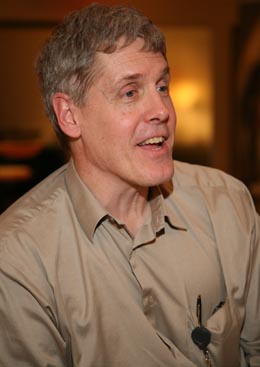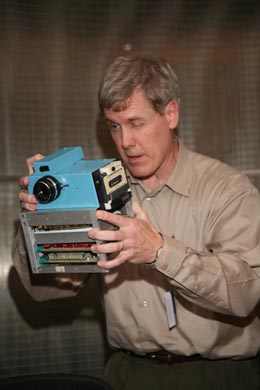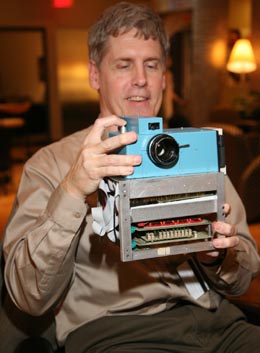
First digital camera big and boxy Steve Sasson and his wife, Cynthia, rarely discuss photography around the dinner table, and he even often misplaces his best camera - but the photography world will never forget this Parma resident. As he shows off his clunky-looking eight pound camera, Sasson is almost apologetic. “If I had known that 30 years later this would be nearly as interesting to people I would have made it prettier,” he said. The camera, created by Sasson, is the world’s first-ever digital camera. Sasson invented it while working as a research engineer for Eastman Kodak. He remembers December 9, 1975 as a red letter day. He and Cynthia were finalizing their move to Irondequoit and a camera he had been working on recorded its first image. The project started from a hallway conversation he had with his supervisor. His task was to build a device that would capture an image, store it, and play it back electronically. The word “digital” wasn’t even in the equation. But for Sasson, who graduated from Rensselaer Polytechnic Institute with a master’s in electrical engineering, digital was the only way to go. “I did it digitally because I didn’t know any other way to do it,” Sasson said. The project started modestly with Sasson and a couple technicians and it continued with little attention. “I wanted it to be portable, to take a picture and store it on a removable medium,” Sasson said. He used a digital cassette to store the images. Once they were on the cassette, he would use a television monitor to display the image. After many tests and tweaks, Sasson decided it was time to try to capture the image of a more complex subject. “We (Sasson and a male technician) said we should take a picture of someone. After looking at each other, we said we should take a picture of someone else,” Sasson said. The duo was able to coax a female technician into being their model. When the image appeared less than clear, she told Sasson he better keep on working and walked away. Before she could get far, he made some quick adjustments and the image appeared clearly on the screen. A breakthrough that provided Sasson with euphoric feelings was met with mixed emotions by his colleagues. “The reaction was a mixture of curiosity and annoyance,” Sasson said, as it was clear that the discovery would somehow impact the Kodak world. “The question was, ‘how would this affect Kodak.’ To be honest, I didn’t know,” Sasson said. While almost nothing was shared beyond Kodak’s walls, Sasson began presenting his invention to others inside the organization. Sasson said the presentation’s title, “Filmless Photography” didn’t warm the audience up. As Kodak leadership wrestled with its implications for the future, news of Sasson’s invention was hushed. Any publicity of his accomplishment has been within the last few years. He recently received the Photographic Society of America’s top honor, the Progress Medal Award. And for Sasson, creating the digital camera isn’t his favorite conversation topic. “Honestly, it doesn’t come up that much,” he said. When media coverage first broke, Sasson basked in a rare treat. “For 10 minutes my kids actually thought I was cool,” Sasson said. That moment has passed, however, and Sasson said he is banned from helping his children, Michael and Jennifer, with their science homework. Sasson, a Brooklyn boy, wouldn’t trade his quiet wooded Parma lot for the spotlight. He said his family has lived in Parma almost 20 years and they really enjoy the community and the school district. He enjoys the friendly people and his surroundings. He is also enjoying the opportunity to tell the hidden story of the Kodak effort. “I like to talk about this because it demonstrates what Kodak was doing years ago behind closed doors,” Sasson said. “Kodak is a great place to learn because you are surrounded by experts, I’m privileged to have had the career I’ve had.” Patently impressive
November 12, 2006 |


